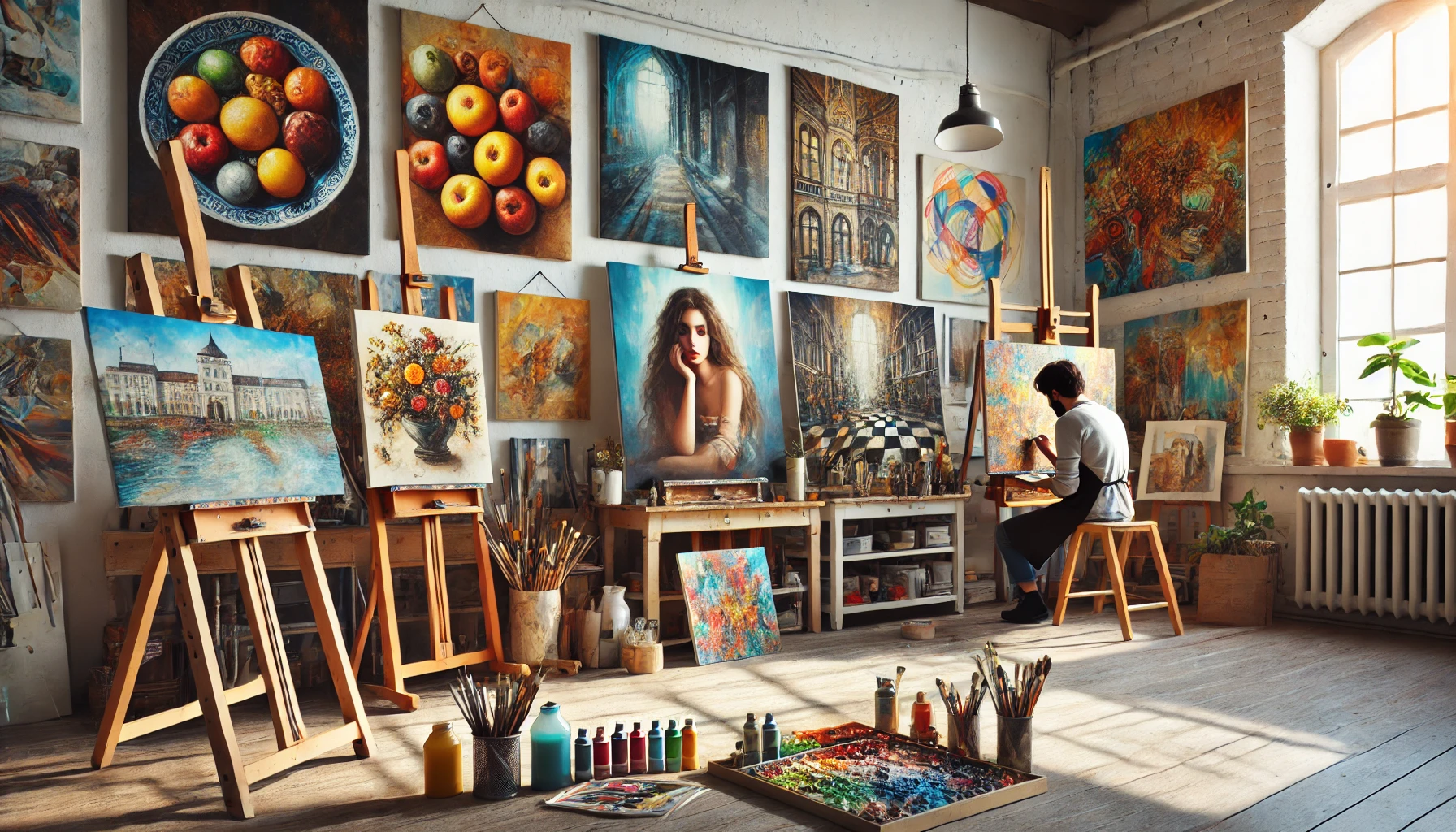Oil painting is a versatile and rich medium that has captivated artists for centuries. Its unique properties allow for a wide range of techniques and styles, making it a favorite among both classical and contemporary painters. Today, we’ll explore how different subject matters in oil painting can enhance your artistic journey, offering tips and examples to help you delve deeper into this fascinating art form.
The Timeless Appeal of Oil Painting
Before we dive into the various subject matters, let’s take a moment to appreciate the timeless appeal of oil painting. Its luminous quality, the ability to blend smoothly, and the durability of the paint itself have made it a preferred choice for many artists throughout history. Whether you’re drawn to the delicate details of still lifes or the dynamic energy of abstract compositions, oil painting offers endless possibilities.
Exploring Traditional Subject Matters
Still Life
Still life paintings are a wonderful way to hone your observational skills and mastery of detail. These works typically feature inanimate objects such as fruit, flowers, and household items, arranged in a way that highlights their textures, colors, and forms.
- Composition: Focus on arranging your objects in a way that guides the viewer’s eye across the canvas. Use the principles of balance and harmony to create a visually pleasing composition.
- Lighting: Pay close attention to how light interacts with your subjects. This can add depth and dimension to your painting.
- Textures: Experiment with different techniques to capture the textures of your objects, from the smoothness of porcelain to the roughness of a wooden table.
Portraits
Portrait painting is a timeless genre that captures the essence and personality of the subject. Whether painting from life or a photograph, the key to a successful portrait lies in your ability to convey the subject’s likeness and emotional depth.
- Proportions: Master the basic proportions of the human face to ensure accuracy.
- Expression: Focus on the eyes, as they are often the most expressive part of the face.
- Skin Tones: Mix a variety of colors to create realistic skin tones, paying attention to subtle variations in hue and value.
Landscapes
Landscape painting allows you to capture the beauty and majesty of the natural world. From serene countryside scenes to dramatic seascapes, the possibilities are endless.
- Perspective: Use atmospheric perspective to create a sense of depth. This involves painting distant objects with less detail and cooler colors.
- Color: Observe the natural colors in your scene and use them to create a harmonious palette.
- Brushwork: Experiment with different brushstrokes to capture the textures of trees, water, and sky.
Embracing Modern Subject Matters
Abstract Art
Abstract art breaks away from traditional representation to explore shapes, colors, and textures in a more freeform way. This style allows for a greater expression of emotion and concept.
- Experimentation: Don’t be afraid to experiment with different techniques and materials. Abstract art is about pushing boundaries and finding your unique voice.
- Composition: Even in abstract art, composition is key. Consider how different elements interact on the canvas.
- Color Theory: Use color to convey mood and emotion. Understanding the relationships between colors can help you create a dynamic and engaging piece.
Surrealism
Surrealism combines elements of reality and fantasy to create dreamlike and often bizarre images. This genre allows for great creativity and imagination.
- Imagery: Combine unrelated objects and scenes to create a sense of the uncanny.
- Symbolism: Use symbols to convey deeper meanings and themes.
- Techniques: Surrealism often employs traditional painting techniques, so a solid foundation in realistic painting can be very useful.
Enhancing Your Oil Painting Techniques
When it comes to enhancing your oil painting techniques, experimenting with different subject matters can significantly broaden your skills and artistic expression. Whether you are captivated by the intricate details of a still life, the emotional depth of a portrait, or the imaginative realms of surrealism, each genre offers unique challenges and rewards.
Key tips for improving your oil painting techniques include:
- Practice Regularly: The more you paint, the better you’ll get. Set aside time each week to work on your craft.
- Study the Masters: Look at the works of famous oil painters and analyze their techniques.
- Experiment with Materials: Try different brushes, mediums, and surfaces to see how they affect your work.
- Take Classes: Learning from a skilled instructor can provide valuable insights and feedback.
By incorporating these practices into your routine, you’ll see significant improvements in your oil painting skills over time.
Conclusion: Finding Your Artistic Voice
Exploring different subject matters in oil painting not only enhances your technical skills but also helps you discover your unique artistic voice. Whether you find joy in the meticulous details of still lifes, the emotional resonance of portraits, or the bold expressiveness of abstract art, each genre offers its own set of rewards.
Remember, the journey of an artist is one of constant learning and experimentation. So, pick up your brushes, squeeze out those vibrant oils, and let your creativity flow. Happy painting!

